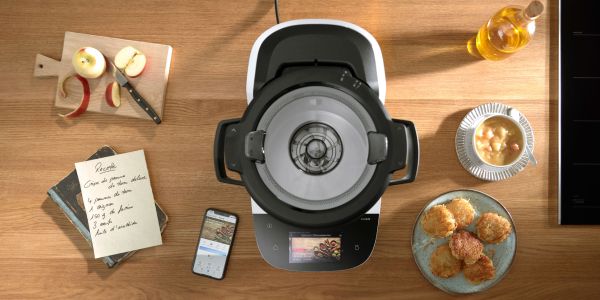I’ve been thinking a lot about how households in the U.S. define what “lasts.” In my career consulting lifestyle brands, I’ve seen two categories dominate the conversation—rings and furniture. Wedding rings represent symbolic permanence, an identity that endures across decades. Furniture, particularly outdoor pieces, shapes daily life and gets replaced periodically. The debate—rings or furniture—boils down to different definitions of value. One is emotional, the other practical. The real insight isn’t which lasts longer physically, but which leaves the deeper imprint on American homes.
Wedding Rings as Lifetime Symbols
Wedding rings carry permanence that few other items can match. In my experience advising jewelers, the purchase is rarely transactional—it’s highly personal and emotional. Most buyers don’t think ROI in dollars; they think in legacy. Once a ring is chosen, it becomes part of identity. That’s why platforms like men’s wedding rings highlight symbolism alongside design. Unlike furniture, rings don’t cycle with trends as often—they persist through marriages, milestones, and generations. When we ask what truly lasts in American homes, rings dominate on the symbolic axis.
Furniture as a Lifestyle Cycle
While rings symbolize permanence, furniture operates on renewal cycles. I advised a retailer who learned the hard way—pushing furniture as “forever pieces” actually slowed sales. The reality is furniture is replaced, repositioned, and reimagined every 5–10 years. Outdoor patio furniture especially must balance style with durability. That’s why platforms such as outdoor patio furniture succeed by selling comfort, design, and function built for repeat purchase. Furniture doesn’t last in the same way jewelry does, but it creates touchpoints across life—family dinners, summer nights, communal spaces. Its value lies in moments, not permanence.
Emotional Permanence vs Practical Durability
Over the years, what I’ve learned is this: wedding rings deliver emotional permanence while furniture delivers practical durability. The two are not interchangeable. A client once asked if furniture could be branded with the same permanence narrative as rings—it backfired. Customers expect rings to signal meaning, while they expect furniture to perform functionally. The distinction is crucial for both marketers and consumers. Rings last in memory and identity; furniture lasts in practical cycles until wear and lifestyle changes trigger replacements. Both forms of “lasting” coexist, just in distinct categories.
Consumer Psychology in Purchase Decisions
Look, the bottom line is emotions drive jewelry, functions drive furniture. Jewelry buyers are swayed by legacy, romance, and symbolism. Furniture buyers care about usability, comfort, and visual integration with their homes. I’ve seen jewelry campaigns flop when they leaned on practicality, and furniture campaigns fail when they leaned too heavily on symbolism. In my consulting years, I’ve found American homes thrive on both types of investment: one to secure personal identity, another to support daily life. To ask which truly lasts is to miss that both occupy different psychological lanes.
Cultural Trends Shaping Longevity
Back in 2010, heavy dining sets dominated outdoors. By 2020, modular, eco-friendly patio furniture defined the market. Rings, meanwhile, shifted more slowly—designs expanded beyond gold with tungsten and carbon fiber options, but symbolism remained constant. The data tells us that furniture must evolve rapidly with tastes and lifestyles, while rings persist unchanged in meaning. For U.S. households, this means that furniture refreshes trace cultural shifts in living, whereas rings remain timeless markers of tradition. Each “lasts” differently: one through adaptability, the other through unchanging significance.
Craftsmanship and Perceived Value
Craftsmanship is the hidden driver of lasting value in American homes. In rings, buyers expect materials that endure decades—platinum, tungsten, titanium. In furniture, buyers expect resilience against weather, comfort design, and structure that survives years of use. I recall one client selling outdoor chairs with subpar materials—returns exploded. Customers equated poor craftsmanship with lack of longevity. In both cases, craftsmanship equates directly to trust. Whether it’s an heirloom men’s wedding band or a teak furniture set, perceived value hinges on durability. Poor craftsmanship erodes both symbolic and practical interpretations of “lasting.”
Social Signaling and Long-Term Value
Here’s what nobody talks about: both rings and furniture live in the realm of social signaling. A wedding ring doesn’t just signal commitment to a spouse—it signals social stability and maturity. Furniture, meanwhile, signals lifestyle, success, and hospitality. I’ve seen homeowners obsess over patio layouts as much as couples obsess over ring choices. In both cases, what lasts is the signal itself. American homes may replace furniture or hold on to rings for life, but the conversation each creates with others is the legacy that endures.
Business Cycle Lessons on Lasting Value
From a business perspective, I’ve learned to weigh three factors: purchase frequency, margin, and symbolism. Rings are high-margin, low-frequency; furniture is moderate-margin, high-frequency. Both “last,” but in ways relevant to business cycles. During downturns, jewelry holds strength because symbolism persists even under stress, while furniture spikes in booms when lifestyles shift upward. The reality is both categories offer staying power—but how they last depends on consumer income cycles and emotional readiness. The long-term winners are brands that understand these cycles and market accordingly.
Conclusion
Rings or furniture—what truly lasts in American homes? The smarter answer is: both, but in different ways. Rings endure as emotional anchors and identity symbols. Furniture lasts as functional hubs of daily living and cultural expression. Together they compose the fuller picture of what households value—permanent meaning on one hand, evolving use on the other.
FAQs
Do rings last longer than furniture in American homes?
Yes, rings typically outlast furniture symbolically and physically, while furniture cycles every 5–10 years due to style and wear.
Why are wedding rings considered permanent?
They symbolize commitment, legacy, and identity, anchoring emotional value that extends across generations.
How often do U.S. households replace furniture?
Most replace furniture every 5–10 years, with outdoor sets often turning over faster due to exposure and lifestyle changes.
Which is a smarter investment: rings or furniture?
It depends—rings deliver emotional permanence, furniture delivers ongoing practical life value. Each is smart depending on priorities.
What adds more social value, rings or furniture?
Both add social value differently: rings symbolize personal maturity and relationships, while furniture reflects lifestyle, success, and hospitality.













+ There are no comments
Add yours